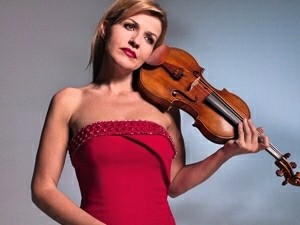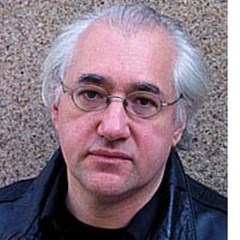|
Back
Fiddler At Her Peak New York
Isaac Stern Auditorium, Carnegie Hall
11/11/2014 -
Sebastian Currier: Ringtone Variations (U.S. Premiere)
André Previn: Tango Song and Dance
César Franck: Violin Sonata in A Major
Ludwig van Beethoven: Violin Sonata No. 9 in A Major (“Kreutzer”), Opus 47
Anne-Sophie Mutter (Violin), Lambert Orkis (Piano), Roman Patkoló (Double Bass)

A.-S. Mutter (© Courtesy of the Artist)
What a week for fiddlers! Two nights ago, the Danish/Israeli Nikolaj Znaider played the Beethoven Concerto. Tonight Joshua Bell goes a bit off the beaten track with the Glazunov Violin Concerto.
And last night, it was the turn of Anne-Sophie Mutter–as usual dressed in a glittering gown (this one lime-green), as always with her wonderful accompanist, Lambert Orkis–and, as has now become customary, playing a recital which combined the familiar with the new.
And of course, giving a stupendous show, in whatever she offered.
The familiar were César Franck’s Sonata and the Beethoven “Kreutzer”, both certainly memorable. But with the New York premiere by Sebastian Currier, Ms. Mutter made this again an original one.
Ms. Mutter has teamed up with, of all things, a fine double-bass player, Roman Patkoló, commissioning a number of pieces for her violin and his instrument. I don’t know how the others sounded, but Mr. Currier’s Ringtone Variations was like a happy thesaurus of every single possibility one can imagine with this kind of duo.

S. Currier (© Boosey and Hawkes)
Mr. Currier never ceases to impress with his originality and honesty in everything he writes. With Ringtone Variations, he has taken that old-fashioned telephone greeting series of notes, and in 15 minutes, made an rhythmic and algorithmic alteration in whatever can be done with it.
Those few notes had Ms. Mutter and Mr. Roman Patkoló playing almost always dazzlingly quickly, sometimes together, sometimes way apart, often “arguing”, coming in concord, zipping up one scale and down the other.
There was nothing cute, nothing precious in the music. One could see it as utilizing every string technique possible (and some virtually impossible). But the enjoyment of their partnership was more fun than noting the technical audacity of a composer who obviously knows his instruments.
The second new work was yet another piece written by André Previn, who was once married to the violinist and still retains his artistic partnership. I think Mr. Previn is one of the inspired conductors of our day (his Rachmaninoff beats the pants off of even Ashkenazy), and a great jazz and classical pianist as well.
But his music for Ms. Mutter tends to be not as inspired (or inspiring) as clever-clever. Here, in three movements, he parodied a tango, offered a very pretty song without words, and ended with a movement described as “jazz feeling”. It did have a jazzy syncopation, and Lambert Orkis played it with a good beat.
But Mr. Previn would be the first to say this ain’t jazz. This, like the rest the piece, was a simulation of a mood. Yet played with as much commitment as these two could pick up.
The mainstream 19th Century pieces were given two treatments. The Franck Sonata, no matter how much one has heard it, still has a gorgeous ending, and a preceding recitative-fantasia which showed Mr. Mutter at the top of her form.
But it was the Beethoven “Kreutzer” where one could honestly say, “This is Anne-Sophie Mutter as one of the truly historic figures of her instrument.”
Here, it was not so much the notes as the personal vibrancy which made it come alive. For the first half of the program, Messrs Orkis and Mutter really tried and really succeeded. In this second half, where the Beethoven wasn’t surrounded by other music, we had an emotional pull that was never simulated.
The first movement had the most dramatic emphases and strong accents and sudden passages, yet they were never ugly or crude. The variations were played with a simplicity, a linear texture, a delicacy and a singing line.
The final Presto movement brought these two masters of their instrument together, with the sharpness, acuity and fullness of sound–by both artists–which held the attention in a way that few are capable of doing.
Harry Rolnick
|